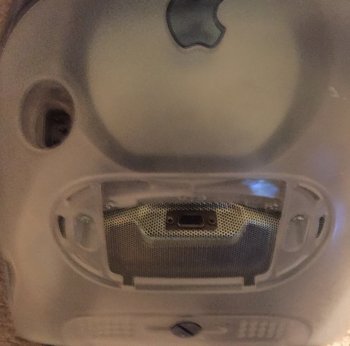I just pulled an ATA drive out of an iMac DV SE from Summer of 2000. It's been sitting in a storage shed at my parents' house for the last decade, and they were cleaning it out (and I forgot it was out there) so I picked it up and took out the drive to review and see if there was anything in there I wanted to archive (if I hadn't done so already 12 years ago, as I do not remember if I did this or not.)
It doesn't look like there's anything in the desktop or documents partitions. I probably hooked this up to my old laptop in target disk mode around 2004 (since the computer stopped working; screen borked out and I think it was hardware related) and I backed up the files or pulled them off the HD.
Now, I want to erase the drive and reinstall an older version of OS X (I have an install disk for Panther -10.3, which I believe will run on this) just to see if I may be able to get it working again as a fun little project, but I need to do this from my current computer (either my 15" MBP 2012 at home, or my iMac 5K 2015 at the office.) I have an external DVD drive I can hook up. How would I go about doing this? I know I can erase and reformat the disk in Disk Utility, and I have a DVD drive I can hook up to load up the old disks, but is is possible to install OS X from a disk to a disk hooked up as an external drive using a newer Mac?
It doesn't look like there's anything in the desktop or documents partitions. I probably hooked this up to my old laptop in target disk mode around 2004 (since the computer stopped working; screen borked out and I think it was hardware related) and I backed up the files or pulled them off the HD.
Now, I want to erase the drive and reinstall an older version of OS X (I have an install disk for Panther -10.3, which I believe will run on this) just to see if I may be able to get it working again as a fun little project, but I need to do this from my current computer (either my 15" MBP 2012 at home, or my iMac 5K 2015 at the office.) I have an external DVD drive I can hook up. How would I go about doing this? I know I can erase and reformat the disk in Disk Utility, and I have a DVD drive I can hook up to load up the old disks, but is is possible to install OS X from a disk to a disk hooked up as an external drive using a newer Mac?


